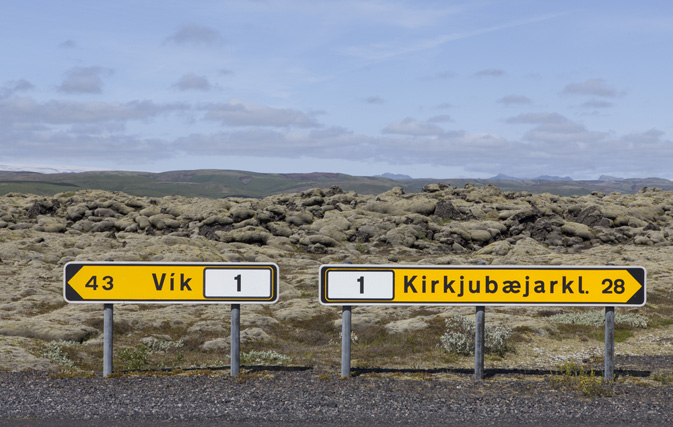ISAFJORDUR, Iceland — Iceland’s challenges include boiling hot springs, frigid waters and vast wildernesses where sudden fogs leave you terribly alone. For me, the most daunting challenge was the tungumalanamskeidid – a course in trying to learn the language.
On the three-week course, I found Icelandic deserves its nickname “Latin of the North” with a complicated skein of sIx noun classifications, each with up to 16 different suffixes; five families of verbs; an archaic and insular vocabulary and a penchant for serpentine words.
Also like Latin, it’s only marginally useful, spoken by just 0.005 per cent of the planet. My aim wasn’t pragmatic.
On previous trips, I’d become infatuated with Iceland for its primeval landscapes and enveloping hush. But the scenery wasn’t enough for me. I wanted more. The language course in Isafjordur, a town of 2,700, appealed to my romantic side. Geographically and emotionally distant from spiffy, stylish Reykjavik, Isafjordur crouches on a dogleg spit jutting into a fjord dwarfed by 2,000-foot mountains, with corrugated-iron house facades sprouting long tresses of rust. Though minuscule, it is the largest settlement in the Westfjords, a region more thinly populated than Mongolia that sees relatively few visitors even as Iceland’s tourist traffic soared some 300 per cent over the past decade.
It is a fine place to experience what Iceland was like before Bjork and Sigur Ros made the country a paragon of coolness, and also a good place to be studious. There are no distractions aside from the only liquor store within 100 miles and the pristine nature that starts at the town’s edge.
The latter gave me my first serious taste of Icelandic’s difficulty. Asked what we’d do on the weekend, I wanted to tell the class I planned to hike to a waterfall-filled valley. In Icelandic, “the waterfalls” is fossarnir, but if you’re going to them it’s fossana, except if you’re going from a long distance, in which case it’s fossanum. If the spray gets you wet, they’re fossanna.
The trip began to seem like too much trouble linguistically. But I went, and they were pretty (fallegir, fallega, fallegum, whatever).
Keeping track of all this required pages of complicated charts. “If you’re learning Icelandic, you don’t need Sudoku,” said Peter Weiss, a German who’s learned it well enough to become director of Haskolasetur Vestfjarda (University Center of the Westfjords), where the course was held – a handful of rooms in a building that includes a frozen-fish warehouse.
Some students delighted in the game aspect, particularly American software designer Jim Brink and his mathematician wife Norah Esty. Their systematic minds pursued the grammar with zest, writing declension charts on a whiteboard for fun. But even they got overwhelmed. A day before exams, a drawn-looking Brink sighed, “Last night, we figured out there’s 144 word endings we need to know … I think.”
For all the complexity, Icelandic has spasms of radical simplicity, which can be equally perplexing, as in the sentence “Bondinn a a a a.” That can translate as, “The farmer by the river has a sheep,” but figuring it out requires counterfactual thinking: In a country where sheep outnumber humans nearly 3-to-1, it’s hard to imagine a loser farmer who only has one.
The grammar’s tough, but the vocabulary could be a joy for its offbeat poetry. Icelanders resist incursions of foreign words, preferring to adapt the lexicon of 9th century settlers for modern developments. Telephone is “simi” from the word for thread, a computer is “tolva” from number-sorceress, and my personal favourite: Soda to an Icelander is a “gosdrykka” – an eruption-beverage.
The course returned all of us nominal adults to a juvenile state, feeling both vulnerable for how little we could actually say and smug about what we could. When I was able to both remember and smoothly pronounce the serpentine word for nurse, hjukrunarfraedingur, I was so proud that I wanted to fake an injury so I could go to a hospital and show off.
The town shopkeepers mostly treated us like good children, patient and amused by our eager clumsiness. Though I did get a few doglike looks of incomprehension at my accent, which is tarred by an Ohio upbringing and feathered by 20 years of living in Russia and Sweden.
I wasn’t able to lose that accent enough to meet one of my goals: to convincingly pronounce Icelandic’s “-ll,” the phoneme whose mangling by foreign newscasters during the 2010 Eyjafjallajokull eruption gave a laugh to presumably all 320,000 native speakers. There’s a ghostly “t” in there, an appealing sound like a soft pigeon coo, that remains elusive.
It’s a reason to go back.

